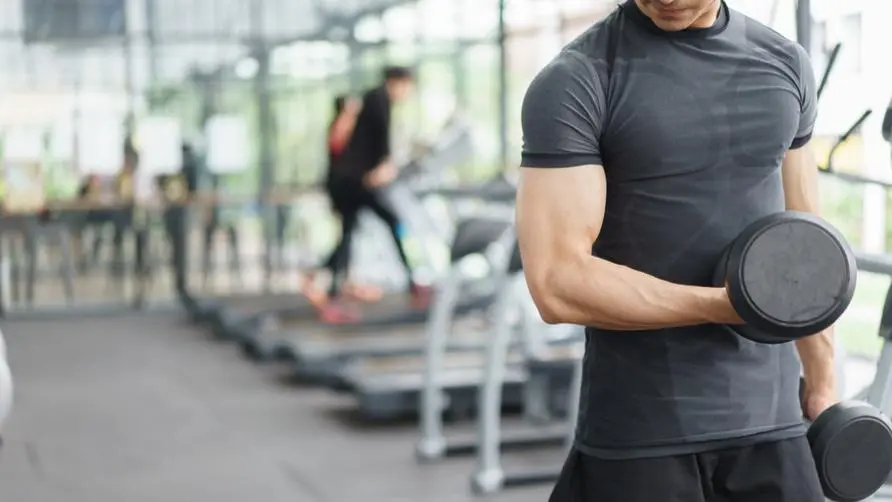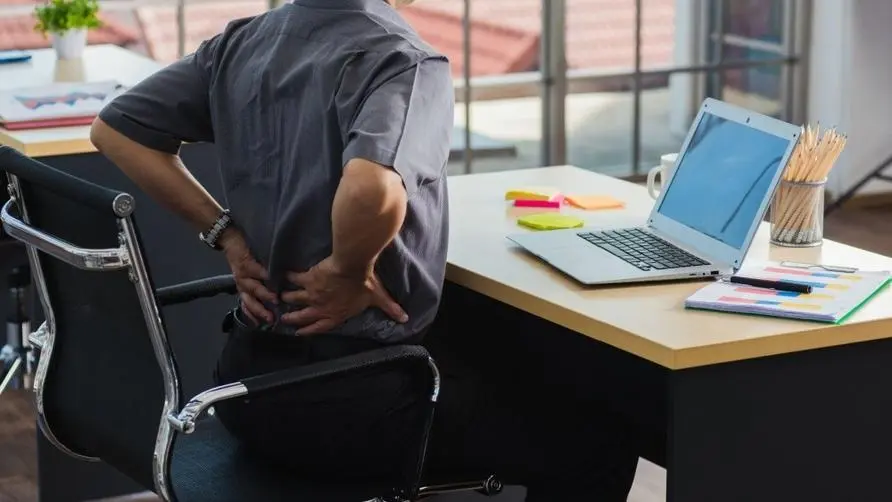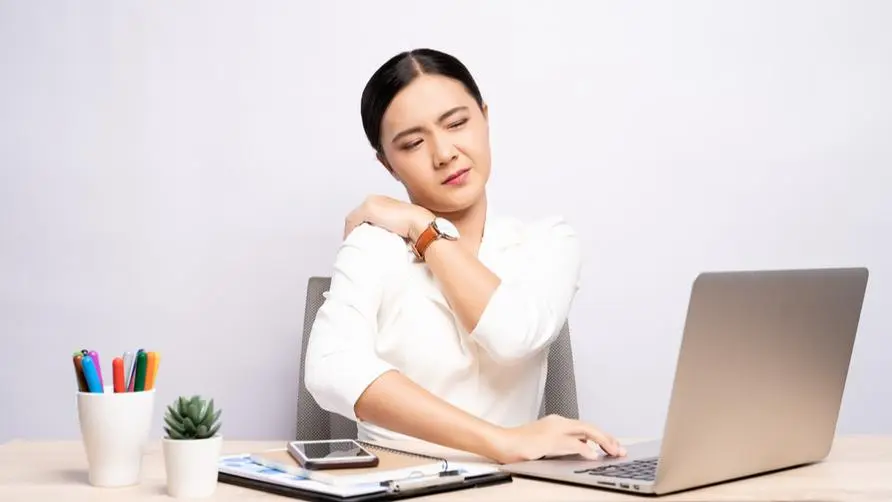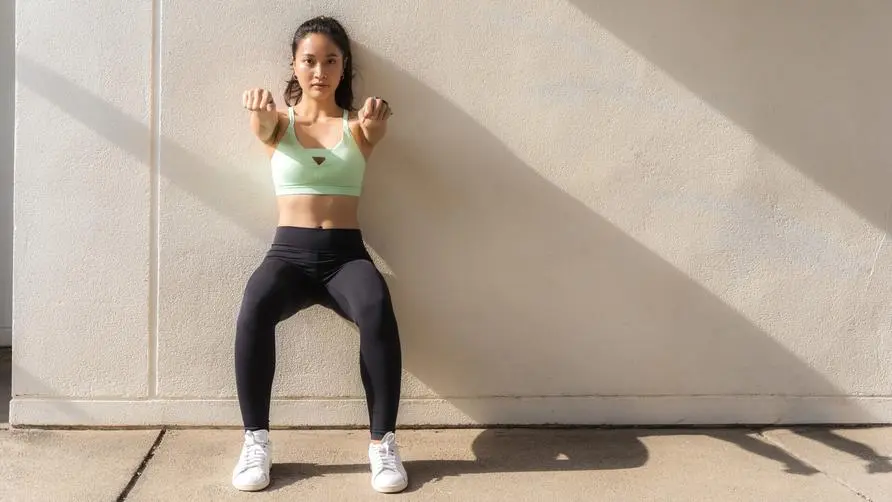Office workers have a solution for lower back pain, back pain, and knee pain! Fitness coach teaches "6 major movements" to help the body correct and return

Do you need to walk slowly down the stairs like an “elderly”? Weak “2 major muscle groups” joints age faster
Due to lack of exercise, many young office workers feel like 60- or 70-year-olds when going up and down stairs. Their knees and leg muscles will be particularly sore. Coach Zheng Zhiwei (Jacko), a professional trainer at World Gym, said that weak knees indicate that the surrounding muscles are not functioning as they should. In this case, overuse can easily lead to a pressure imbalance on the surrounding muscles of the knee joint.
Coach Zheng Zhiwei said that in order to balance the pressure on the knees and stabilize the joints, you might as well start by training the “core muscles” and “gluteal muscles”. It is recommended to train the core muscles first, and then further exercise the gluteal muscles. This will help share the pressure from the front of the knee to the buttocks. It can also effectively alleviate knee discomfort when taking stairs or walking. It should be noted that if you “eat” one of these during training, you will not be able to achieve muscle “synergy.”
“There are many ways to train gluteal muscles, such as bridge pose, clamshell pose, deadlift or split deadlift. They are all options you can try!” In addition, coach Zheng Zhiwei also pointed out that core training can also be done from bird dog pose, stick pose, etc. Start with simple exercises such as poses and crunches, and can be performed at home with no venue restrictions. The only thing you need to pay attention to is the quality of your movements and the amount of training to avoid injuries caused by over-exercising.
Sitting for long periods of time is a “health killer”! Is “constantly changing positions” the best position?
If office workers sit still for long periods of time and their core and back muscles are not working hard, what potential injuries will occur? Coach Zheng Zhiwei emphasized that sitting for a long time can be said to be a “health killer”. It will not only cause weakness in the back and knee joints, but also easily tighten the shoulders and neck. Many old concepts emphasize “head up and chest up” when sitting. In fact, maintaining a chest up posture for a long time can also lead to stiff shoulders and necks. What’s more, incorrect posture, such as crossing your feet or hanging your lower back on the back of the chair, may lead to sequelae such as disc herniation and joint degeneration.
Coach Zheng Zhiwei said that people are reminded to move their joints and stretch their legs moderately when working, flying, etc., and if the environment permits, they can also get up and walk to the toilet or fill water. They can also adjust their desks and chairs. Work while standing tall. “Remind people who sit for long periods of time, there is no sitting position that can completely avoid back pain, so you may as well “change positions at any time” when you are at work, which will help blood circulation in fascia and muscles!”
Are young people prone to back pain when working? Fitness coach teaches “5 major exercises” for relief
If young people are prone to back pain at work, what exercises can be done to relieve it? Coach Zheng Zhiwei suggested that you can select a few actions to perform. It is recommended that each action be repeated for 2-3 groups, each group for 30 seconds to 1 minute. If any movements cause discomfort or pain during the process, you should stop immediately. It is recommended to seek professional coaches and therapists to evaluate the problem:
Hold the neck and stretch the thoracic spine: Use a yoga ball or a small pillow to place the lower thoracic spine, hold the neck with both hands to stabilize the cervical spine, and bend the thoracic spine back while inhaling without bending the waist.
Lie on your back and hold your neck to stretch: Place the foam roller to the thoracic spine, sit firmly on your buttocks, and support your neck with both hands while bending backward to open the curvature of your thoracic spine while inhaling.
Supine Angel: Place the long roller on the spine, with both arms parallel to the floor. Extend the movement toward the top of the head to keep the arms parallel to the floor, and move the shoulder straps to relax the shoulders and neck.
Shoulder joint activities: Place a yoga ball or pillow on the thoracic spine, sit against the wall, keep the spine extended, hold the stick with your thumbs upward, lift your arms up, and move the shoulder joints in a controlled manner.
Y-shape training: Lie down on the chair cushion, put a towel on your forehead to maintain a good cervical spine alignment, raise your shoulders in a Y-shape with your thumb pointing up, and feel the contraction of the middle and lower trapezius muscles in the upper back.
Coach Zheng Zhiwei also reminded that the above-mentioned movements require the guidance of professional coaches, and it is recommended that people do not try them at home to avoid muscle compensation caused by incorrect movements or sports injuries.
Staring at 3C for a long time may cause “turtle neck”. Practice “1 action” to help the neck to correct and return.
Office workers often have to stare at the screen for hours, which causes the neck to move forward and cause “turtle neck”. What exercises can help relieve turtle neck? Coach Zheng Zhiwei explained that in fact, as long as you return to the correct sitting posture and avoid the forward movement of the cervical spine, the condition of the turtle neck can be significantly improved; the neck can also be returned to the correct position through training assistance. For example, the “neck shift” exercise, which involves moving the head back and tucking the chin, trains the “deep cervical flexors” to maintain the neck in good alignment.
Does the “chin slimming training” currently popular in the Internet celebrity world also have the effect of improving turtle neck? Coach Zheng Zhiwei explained that chin slimming training was initially popular in the yoga circles in the United States and Japan. In recent years, due to the rise of face slimming craze, it has also gradually become popular in Taiwan. The principle of this action also requires the use of deep cervical flexors to move the neck to achieve a relaxing effect. Therefore, if used properly, this training may indeed be helpful for turtle neck. The movements must only be performed under the supervision of a professional coach to avoid neck muscle injuries caused by incorrect movements.
Finally, coach Zheng Zhiwei called on office workers who want to improve their posture through fitness to make sure they take any action under the advice of a professional coach before training. Wrong posture not only makes it difficult to achieve results, but may even cause compensation and cause damage to muscle tissue. Through coach guidance and regular exercise, you can ensure the effectiveness of training and avoid back pain and even severe joint inflammation caused by sitting for a long time.
Further reading:




